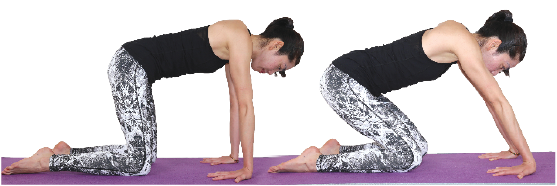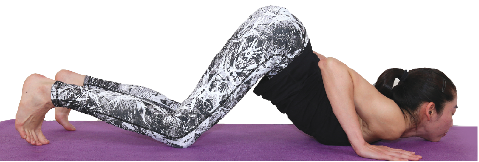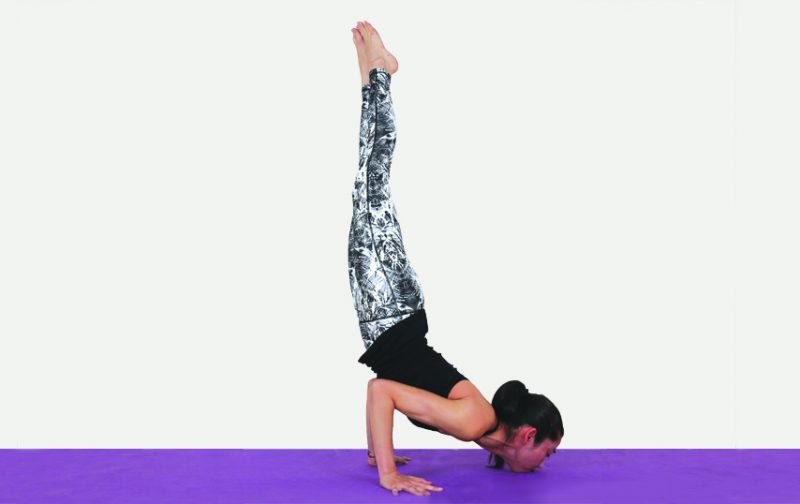Pincha Mayuransa is mainly a backward bending pose; it is similarly a tripod balancing pose having both hands and chin on the ground.
The Sanskrit name of the pose comes from the terms “pincha” (feather) and “mayura” (peacock). It imitates the form of a peacock when its feathers are spread.
Chakra Awareness
Manipuraha Chakra / Solar Plexus
Asana Overview
Chakra Awareness
Manipuraha Chakra / Solar Plexus
Practice Level
Intermediate
Degree of Difficulty
(100 being most difficult)
70
Movement
Backward Bending
A spinal movement done with the extension of the spine, supported by different back muscles.
External Rotation of the shoulders
The movement of the rotator cuff muscles which moves the arms outward (i.e. away from the midline of the body).
Wrist Extension
The movement of raising the back of the hand, moving the back of the hand towards the back of the forearm.
Challenges faced during the poses
Arm strength
As the arms support the body in this pose, arm strength is necessary. Practitioners must strengthen the arms to stabilize the body while in Pincha Mayurasana.
Upper body strength
As most of the body weight is resting on the arms, the upper body (shoulders, chest and back) will take the weight.
Chance of Injury
Wrist & Back Injury
Contraindications
Existing back, shoulder or neck injury
Pregnancy, hernia and other thoracic- and abdominal-related medical conditions.
This pose is contraindicated to those with issues in the abdomen and thoracic area as the front of the torso is active during this pose.
Hyperkyphosis
Refers to an excessive curvature of the thoracic spine, commonly referred to as hunchback. As this is a backward bending pose, having a hunched back poses a difficulty in achieving the pose.
Breast implants
As the pressure of the chest area is great in this pose, Pincha Mayurasana is contraindicated to those with breast implants due to the chance of the implants spilling out.
Major Muscled Involved
Erector Spinae
A muscle group found in the back, which extends the vertebral column in forward and backward bending. This muscle is responsible for returning the vertebral column to the erect position after motion.
Rectus Abdominis
It is responsible for the flexing of the lumbar spine and keeping the internal organs intact, therefore working with the Erector Spinae especially in backward bending movements.
Muscles of the hand, specifically the flexor carpi ulnaris and flexor carpi radialis
The group of muscles in the hand and wrist that allow the extension and flexion of the wrist.
Best Time to Practice
Afternoon or evening, when the body’s natural flexibility is present
Warm-up
These warm-up poses prepare the wrist, shoulders, chest & back for Pincha Mayurasana.
Wrist

1. Come to the hands and knees and rotate the wrist outwards so the fingers are pointing towards the knees.
2. Inhale and on exhale, bring the hips back and feel the stretch on the wrists.
3. Repeat several times by moving in and out of the pose with the breath.
Benefit: Properly extends the muscles of the hands.
Chest
Nirakunjasana / Heart Pose

1. Come into table top pose with the arms directly under the shoulders, knees hip width apart and the feet directly behind the knees.
2. Inhale and on exhale, bring the chest in between the hands. If the chest and back is already open, bring the chin to the floor as well for a greater chest opening. Let the weight of the body rest on the chest area and ensure that there is not too much pressure on the throat and jaws.
3. Maintain normal breathing while in the pose. Come out of the pose by slowly pushing yourself up with the hands or by slowly sliding the chest forward, lying down on the abdomen.
Benefit: Opens the chest to prepare for backward bending poses.
…more
To read the full article please download our Asana Journal App or purchase Issue 145 January 2015.


















 Other
Other